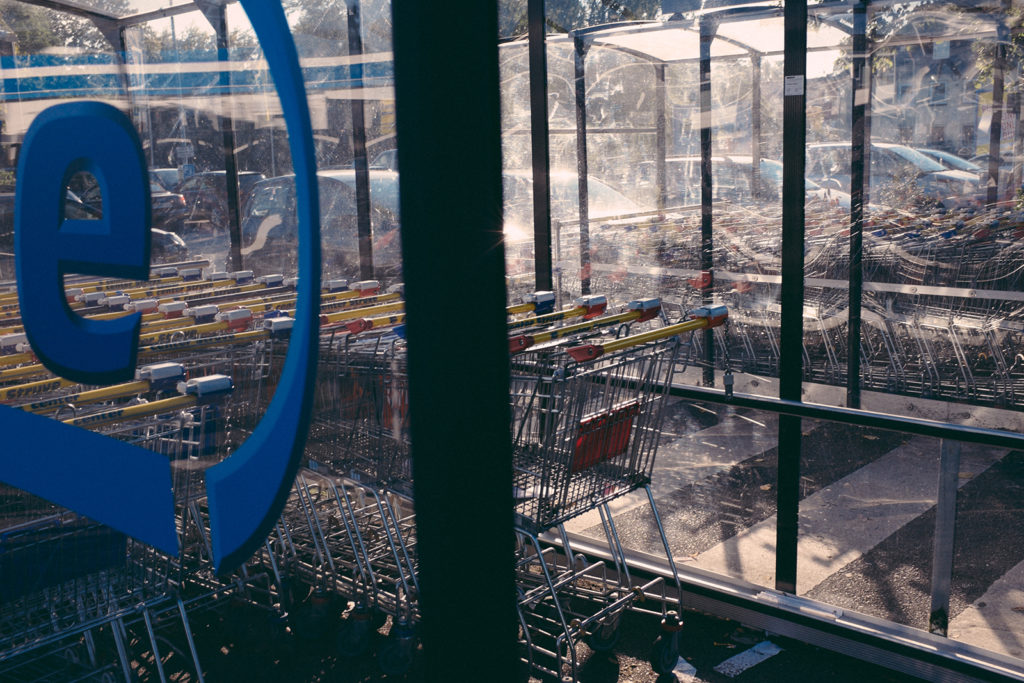Human-centric case study: Supermarket self-scanning
Unexpected insights in the bagging area
Nowadays, most people are happy scanning a small basket of groceries themselves. The occasional glitches in technology are still annoying, but it is quicker and more convenient than queuing up for a checkout.
It’s hard to remember now, but not that long ago the idea that you would pay for your own shopping without interacting with a member of staff just wasn’t on anyone’s radar. But somehow the supermarkets have engineered a massive behaviour change that suits them and us.
Now they want us to do the same with ‘the big shop’. Scan the whole trolley as you go around the store and then cruise through a checkout without bothering staff (who, you think, will become somewhat fewer in number once this goal has been achieved). Most of the supermarkets now provide the tech to allow us to do this but shoppers, on the whole, simply refuse to adopt this behaviour.
What’s the goal?
First, we clarified the behaviour change objective in a specific, granular way: to get weekend ‘big shoppers’ to scan a trolley of shopping just once. Inspired by the basket self-scanning experience, London’s Oyster card system and contactless payments, we were all clear that the challenge is primarily one of adopting the new behaviour, not sticking with it.
What’s driving existing behaviour and stopping the change?
We then moved on to discussing the mental biases and heuristics that stopped the desired behaviour happening. There were lots: a key one is the default, habitual nature of shopping. We just pick up our trolley, enter the store and wheel it past the self-scan desk without even seeing it, tracking towards the bananas on autopilot. So clearly our interventions need to break this habit.
Another big one is self-efficacy. If people don’t know how to do something, they won’t. And in this case, there’s quite a lot of self-doubt: How does the gadget work? How am I supposed to carry it and push the trolley at the same time? What if I don’t scan something, will an alarm go off? Do I need to pre-register my payment card? It’s another biggie, and something our interventions clearly need to address.
On and on. Why should I, what’s my incentive? I can see why the supermarket would like me to do this, but what’s the benefit to me? Do I save time, money? Not obviously. Again, this needs confronting.

First steps to a solution
This structured discussion of behavioural barriers meant we quickly identified the many challenges to overcome. By then lasering in on the ‘Decision frame’ (the context in which decisions are taken), we began to identify interventions to address the challenges:
- Through loyalty card database communications, get shoppers signed up to appointments to be briefed on self-scanning for the first time. This helps overcome the habit issue.
- Provide an incentive to set up the appointment. Cash off the first completed self-scan shop (and potentially the second and third, to drive home adoption of the new behaviour).
- To overcome self-efficacy challenges, have trained staff at those appointments whose job it is to explain the process and chaperone the shopper around the store if necessary. Playing a similar role to the smiling helpers in the basket self-scan area.
- Provide surprise and delight elements to the experience that make it more enjoyable and rewarding than a conventional shop. For example, use the technology to flag up missed multi-buy promotions (as is done in online shopping), allow pre-loading of lists so that the device can work out the best route through the store etc.
These are just a few of the many ideas we came up with. Some needed sharpening and many looked potentially expensive, but the long-term savings could be huge.
We got to a strong – and large – set of ideas really quickly: through just smart people spending an hour applying our behaviour change thinking to a problem they weren’t familiar with. Use the same technique for a real client problem, with real experts around the table, and the results are even more impressive.
To find out more about our approach to human-centric marketing, please get in touch.




